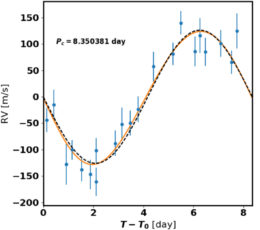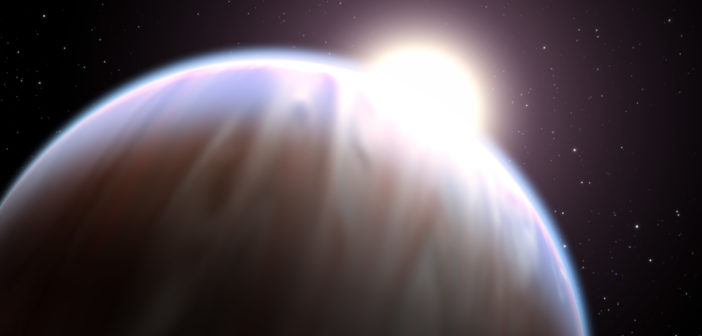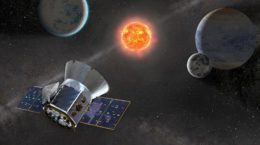Editor’s note: Astrobites is a graduate-student-run organization that digests astrophysical literature for undergraduate students. As part of the partnership between the AAS and astrobites, we occasionally repost astrobites content here at AAS Nova. We hope you enjoy this post from astrobites; the original can be viewed at astrobites.org.
Title: TESS spots a hot Jupiter with an inner-transiting Neptune
Authors: Chelsea X. Huang, et al.
First Author’s Institution: Massachusetts Institute of Technology
Status: Published in ApJL
For centuries, humankind has wondered if other planets exist outside of our own solar system, or if we are in fact unique. The first recorded attempts to observe other planets date to around the 19th century — although exoplanets have been speculated since the 16th century — but we did not have the technology to make the detailed measurements required to detect planets around other stars until the last few decades. The first detected exoplanet, 51 Pegasi b, was discovered in 1995, and since then we have learned that exoplanets are actually more of the rule than the exception. Some of the most common exoplanets that we are able to detect are called hot Jupiters — large gas giants like our Jupiter, but so close to their host stars that their orbital periods are on the order of 10 days or less — and mini Neptunes, similar in composition to our Neptune, but smaller.

The radial velocity curve of TOI-1130 c. The radial velocity method is based on the slight circular or elliptical movements of a star due to the gravitational effects of its planet(s), and their resulting Doppler shifts. The orange line indicates the best fit of the curve, while the blue error bars account for systematic and astrophysical unknowns. [Adapted from Huang et al. 2020]
But why is this system unique? TOI-1130 one of only three known systems in which a hot Jupiter-type exoplanet has another planet within its orbit around the host star; the other two are WASP-47 and Kepler-730. It is thought to be a strange occurrence both because of the small sample size, and because current migration models indicate the hot Jupiter would kick smaller planets out of its way as it settled into its current orbit, like a schoolyard bully.
Despite the prevalence of hot Jupiters, the way they are formed is still a hot research topic, and systems such as these three could help shed more light on the formation problem. The three main theories for hot Jupiter formation mentioned in this paper are:
- Migration: the hot Jupiter formed further out in the protoplanetary disk and migrated inward due to various potential processes
- In situ formation: the hot Jupiter formed where it is now, very close to its host star
- Planet-planet scattering: planets that pass close to each other gravitationally interact and push each other onto new, different orbits
About the author, Ali Crisp:
I’m a second year grad student at Louisiana State University. I study both hot Jupiter exoplanets and binary star systems in the bulge of the Milky Way. I am originally from Tennessee and attended undergrad at Christian Brothers University, where I studied physics and history. In my “free time,” I enjoy cooking, hiking, and photography.


1 Comment
Pingback: Gorący Jowisz z wyjątkowym towarzyszem – PTMA Kraków